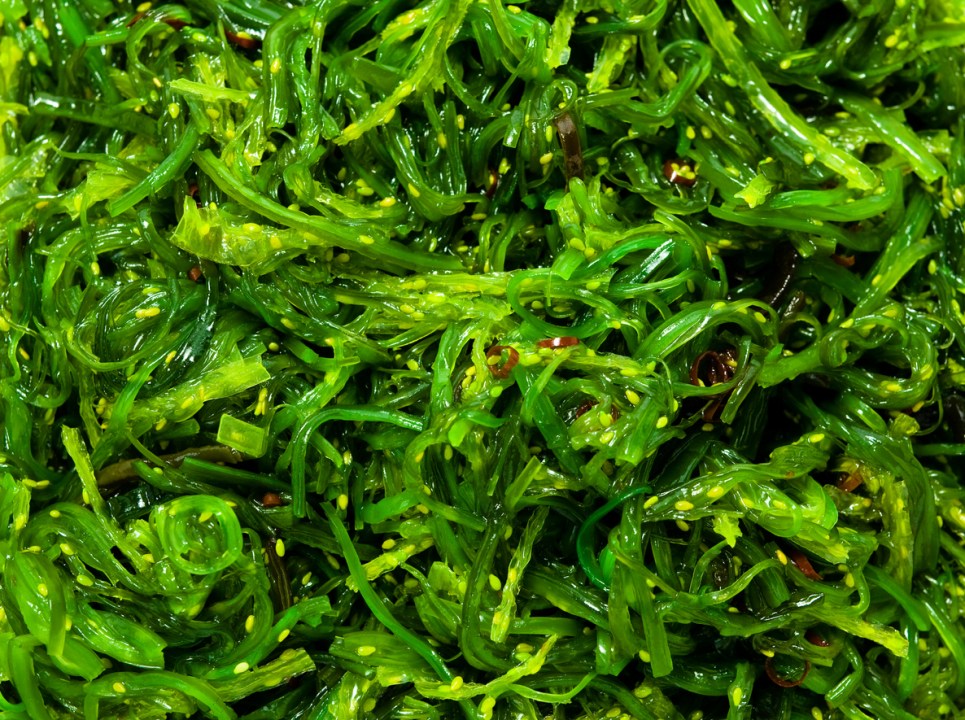Foraging has become a sign of status rather than a lack of it and seaweed is perhaps the most abundant wild food of all. The alternative is mushrooms, but I’ve always thought fungus-hunting a bit too wild; the possibility of a first-class risotto being offset by the risk of death or, worse, expanded consciousness.
Rotting seaweed is disgusting. My local newspaper in Cornwall regularly publishes complaints from tourists
Caroline Davey, who trained as a botanist before becoming a forager, assures me that only three species of seaweed are poisonous and they are found only in deep water. They might conceivably wash up on the shore, but the basic rule of seaweed foraging is to avoid the stuff at the high-water mark – that’s all dead and decomposing. I suspect this is one reason seaweed isn’t a more popular food; that, and names like ‘gutweed’. We might avoid apples, too, if our only experience of them was rotting piles mouldering between us and a swim.
Rotting seaweed is disgusting. My local newspaper in Cornwall regularly publishes complaints from tourists convinced they are sewage discharges – one of the rare instances when no one bothers to correct the emmets, even when it’s quite obvious that what they think is toilet paper is sun-bleached Ulva lactuca, or sea lettuce, which is as good as it gets for seaweed names.
Even below the high-water mark, the most common seaweeds aren’t that appetising. The only one I could recognise before meeting Caroline was bladderwrack – the one you can pop like bubble wrap. She hesitates and says, ‘That’s not my favourite…’ When a foraging specialist hesitates like that, it’s a bad sign. When she describes something as an ‘acquired taste’ – rock samphire, for example – you lose the temptation to acquire it. (‘Overtones of carrots, fennel, and kerosene,’ according to one cookbook.) ‘You can eat wracks if you’ve got a really good dressing, lots of soy and rice vinegar… But this is one I put in the bath.’ Like all seaweeds growing in the upper half of the beach, wrack has to cope with extremes of sun and water; as a result, they tend to be thicker and more leathery than those nearer low tide.
The really good stuff only shows itself on a spring tide, when the low tide is lower than usual. At the lowest ebb are kelps like oarweed, which can be used in miso soup or to wrap fish for poaching. They are also good for soothing your eyes. Caroline ties me a rudimentary eye mask, which does indeed soothe my eyes, although I quickly realise that stumbling over seaweed-covered rocks – the floor is lava! – with a kelp blindfold is risky business.
In between are the red seaweeds. It took me some time to distinguish between pepper dulse and carrageen (the former looks more like oak leaves), but it’s worth it. Pepper dulse was the only thing I found myself nibbling on. People call it the truffle of the sea, and surprisingly, they’re right: it has an intense, savoury flavour reminiscent of truffles. Caroline warns me not to eat too much as I’m grazing with scissors in hand, since a surfeit can cause stomach ache. Best to use it to flavour mayonnaise or beurre blanc sauce.
Carrageen, on the other hand, not so much. Its main contribution to the culinary arts is setting panna cotta – although you have to bleach it in the sun for several weeks to get rid of the colour and taste. Or, now that rationing is over, you could just use gelatine.
Caroline, however, is a romantic. She started foraging for seaweed on a date; the boy is gone, but she still cooks with seaweed, makes cosmetic gels and creams, and enthuses about its nutritional value. One of the most exciting things for her is that you never know what you’ll find. The cove she takes me to – Nanjizal, near Land’s End, accessible only by a hike across the cliffs – is like a beach from a children’s story. But she realises when we get there that the sea has washed in banks of sand since her last visit, so she’ll have to find something rockier for her next foraging course.
I take a carrier bag of serrated wrack home with me and, somewhat dubiously, follow her instructions for a seaweed bath: douse the seaweed in boiling water, leave it for three-quarters of an hour to release the alginates, then top up the water and have a bath. Alginates are, it appears, substances not unlike snot – colourless and unscented. I climb in. Being a man, I’ve never had a bath longer than half an hour before (obviously). Afterwards, I realise it has taken away all the aches and pains in my legs, which have been troubling me for a few days – ever since the hike across the cliffs to Nanjizal.








Comments